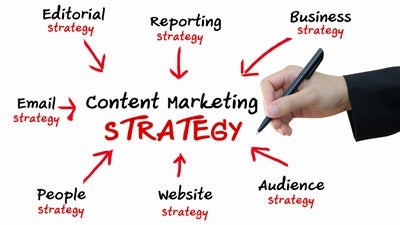Home > Technology > eCommerce >
Why Audience Intent Should Be at the Top of Your Content Marketing Strategy
By: Savannah Marie

When it comes to content strategy, SEO has traditionally been the primary focus for digital marketing professionals. Simply conducting keyword research and scattering the key terms throughout a website was enough to compete in search engines and boost business.
This strategy is no longer enough, as content marketing has become the key to search engine performance and building a successful digital presence. Let’s take a look at why this shift has made considering audience intent and the purpose of web content to become priorities.
Audience Intent
When people go to your site, they do so because they are searching for something. Whether it’s a product or information, it is your job to ensure your content meets their needs. In order to accomplish this, you need to consider who your audience is, what they’re specifically looking for and how to most effectively deliver it to them.
When you’re developing content, you need to put yourself in the mind of your audience members and consider their needs and taste. This means considering whether or not they would find your content engaging, sharable or useful. By first figuring out the intent of your audience it is far easier to develop content for them.
Content Strategy Basics
In order to create a content strategy you need to consider three foundational elements:
- The content’s goal
- How it is profitable or advantageous for your business
- Why it is useful for your audience
These basic elements of content strategy display the fact that content is a two way street. On one hand, you want to give your audience something that benefits them. On the other hand, you are creating the content in order to benefit yourself or your business. Before you begin planning your content strategy, you need to realize who your audience is, what their intentions are and designate the goals of the content as well as your business.
Ecommerce
For an ecommerce site, the content strategy would address each of these issues differently than a blog or a website with a different purpose. For example, an ecommerce site has the underlying business goal to sell their product or service. While this is the primary goal for the business, the goal in terms of content is to give customers something that engages them and sparks their interest.
This strategy allows the business and its audience to accomplish their goals simultaneously. The audience members receive the information and entertainment they seek, while the business brings in a profit.
Information
Content strategy for blogs and online magazines is varied in comparison to ecommerce sites, because these sites aren’t selling a product; they’re selling information. For these sites, content is the commodity, regardless of whether the site is built to raise brand awareness or to bring in advertising revenue. This means that the content still needs to cater to the audience’s needs while simultaneously accomplishing the site’s goals.
For instance if you created a fitness blog that was optimized for advertisements, the site’s revenue would depend upon bringing in visitors. That means content would need to be engaging for an audience that’s interested in fitness in order to be profitable.
Regardless of the topic or intent of your site, considering audience intent should be at the foundation of your content strategy. Bringing more visitors to your site has become a task that involves more than just creating a solid keyword strategy. Whether you are trying to funnel visitors toward a point of sale or attempting to increase readership, crafting content that sparks your target audience’s interest is the key to success.
Published: May 22, 2014
2627 Views
2627 Views












